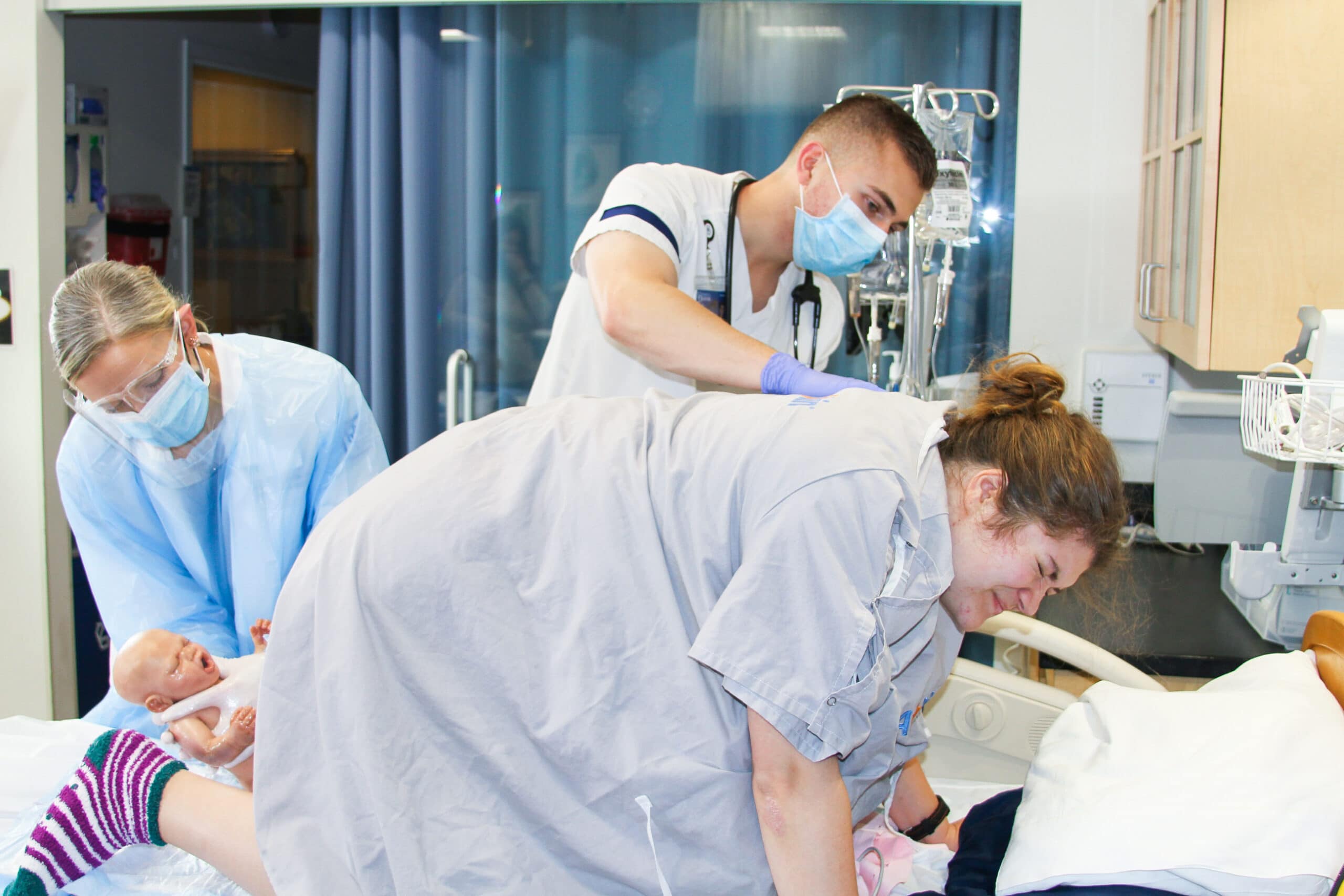Obstetric Emergencies Require High Fidelity Training

Shoulder dystocia occurs in 1 in 20-30 term vaginal deliveries and is often unpredictable (Gurewitsch, 2018). “According to the American College of Obstetricians and Gynecologists, shoulder dystocia is defined as the inability for clinicians to complete the delivery of the fetus with gentle downward traction after the emergence of the head.” (Rayburn, 2017). Unlike other obstetric emergencies, shoulder dystocia can lead to harm to both mom and baby. It “increases the neonatal risk of brachial plexus injury clavicle or humeral fracture, and if not resolved in a timely fashion, may lead to asphyxia due to umbilical cord compression or even death” (Joost Van De Ven, 2015). “Up to 40% of shoulder dystocia end in brachial plexus injuries” (Gurewitsch, 2018).
In the US, injuries suffered because of or related to obstetric emergencies such as shoulder dystocia which are a leading cause of litigation against obstetric providers, with 60% of those cases resulting in medium payouts. That is four times higher than other malpractice cases (Gurewitsch, 2018). Due to the higher number of payouts, liability insurance companies are mandating simulation-based training so that obstetric providers are competent and rehearsed in shoulder dystocia management skills (Gurewitsch, 2018).
The most effective way to prevent shoulder dystocia from being harmful to the patient(s) is for healthcare providers to be prepared, have prompt recognition, and have effective communication skills so that they can skillfully perform the right manoeuvers to mitigate injury (Gurewitsch, 2018). The two most effective maneuvers that can be utilized if “shoulder” occurs are, the McRoberts and the Gaskin maneuvers. McRoberts forces the infant to rotate its shoulders and allows for the delivery of the posterior arm (Joost Van De Ven, 2015). The Gaskin—also known as the “all 4s method”—consists of having the laboring woman move to her hands and knees so that the pelvis is shifted in a different position, helping free the baby from the womb (Joost Van De Ven, 2015). Teamwork amongst healthcare providers is essential for the successful treatment of shoulder dystocia. The best way to practice communication while also practicing effective solutions to emergency problems is to conduct high-fidelity simulations with your care providers.
A 2015 study at the University of Pisa, in Italy, which included 32 obstetrics and gynecology residents, asked the residents to conduct two high-fidelity simulations to see if that would help improve both the technical and the non-technical skills. The residents completed the two obstetric emergency simulations 8 weeks apart. After the second high-fidelity simulation, a significant improvement was seen in the residents, especially in their technical skills. The study concluded that “in a population with limited clinical experience, the use of a high fidelity simulator not only improves technical skills but also has an effect on the interaction with other members of the staff, improving the quality of verbal communication and the management of the obstetric complication”(Mannella, 2016).
Avkin’s newest product Avbirth offers learners the opportunity to practice obstetric emergencies like shoulder dystocia in their pre-programmed simulations. The high-fidelity, fully automated birthing simulator allows learners the ability to practice technical skills (McRoberts and the Gaskin maneuvers) and verbal skills which is essential in improving patient outcomes associated with shoulder dystocia and other high acuity events.
Source:
Gurewitsch Allen, Edith D. MD, MBA Simulation of Shoulder Dystocia for Skill Acquisition and Competency Assessment, Simulation in Healthcare: The Journal of the Society for Simulation in Healthcare: August 2018 – Volume 13 – Issue 4 – p 268-283 doi: 10.1097/SIH.0000000000000292
Joost van de Ven, Frank J. H. M. van Deursen, Pieter J. van Runnard Heimel, Ben Willem J. Mol & S. Guid Oei (2016) Effectiveness of team training in managing shoulder dystocia: a retrospective study, The Journal of Maternal-Fetal & Neonatal Medicine, 29:19, 3167-3171, DOI: 10.3109/14767058.2015.1118037
Legendre, G., P. E. Bouet, and L. Sentilhes. “Impact of simulation to reduce neonatal and maternal morbidity of shoulder dystocia.” Journal de gynecologie, obstetrique et biologie de la reproduction 44.10 (2015): 1285-1293.
Mannella P, Palla G, Cuttano A, Boldrini A, Simoncini T. Effect of high-fidelity shoulder dystocia simulation on emergency obstetric skills and crew resource management skills among residents. Int J Gynaecol Obstet. 2016 Dec;135(3):338-342. doi: 10.1016/j.ijgo.2016.06.023. Epub 2016 Aug 27. PMID: 27622684.
